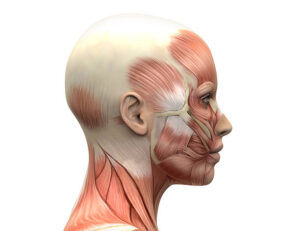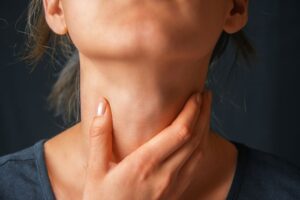
Adelekan Oluwaseun Ojo
Cervical spondylosis, also known as cervical osteoarthritis or neck arthritis, is a common age-related condition affecting the cervical spine, which is the portion of the spine that runs through the neck.
This degenerative disorder primarily results from the wear and tear of cartilage and bones, leading to various symptoms and potential complications.
Causes
The primary cause of cervical spondylosis is the degeneration of the intervertebral discs and facet joints in the cervical spine. Over time, the discs lose their ability to cushion the vertebrae, and the cartilage covering the facet joints wears away.
Factors contributing to this degeneration are
1. Aging: The natural aging process leads to the gradual breakdown of spinal structures.
2. Dehydrated Discs: Discs can lose water content over time, reducing their ability to act as shock absorbers.
3. Herniated Discs: Cracks in the spinal discs can cause them to bulge or rupture, pressing on spinal nerves.
4. Bone Spurs: The body may produce extra bone (spurs) to strengthen the spine, which can press on spinal nerves.
5. Ligament Stiffness: Ligaments connecting the spine’s bones can become stiff over time, affecting neck movement.
Symptoms
Cervical spondylosis symptoms vary widely depending on the severity and specific structures affected. Common symptoms include:
1. Neck Pain: Chronic or intermittent neck pain is the most common symptom.
2. Stiffness: Reduced flexibility in the neck, especially after periods of inactivity.
3. Headaches: Often originating from the neck.
4. Radiating Pain: Pain that radiates to the shoulders, arms, and hands.
5. Numbness and Weakness: Numbness or weakness in the arms, hands, or fingers.
6. Loss of Balance: In severe cases, cervical spondylosis can affect balance.
Diagnosis
Diagnosis of cervical spondylosis involves a combination of clinical evaluation and imaging studies:
1. Physical Examination: A thorough examination to assess neck movement, reflexes, muscle strength, and nerve function.
2. Imaging Tests: X-rays, MRI, or CT scans to visualize the cervical spine’s structure and identify degenerative changes.
3. Electromyography (EMG): Tests nerve function and can help pinpoint nerve compression.
Prevention
While cervical spondylosis is largely age-related and cannot be entirely prevented, certain measures can help reduce the risk or delay its progression:
1. Maintain Good Posture: Proper alignment of the spine during daily activities.
2. Regular Exercise: Strengthening and stretching exercises for neck and upper body.
3. Ergonomic Adjustments: Proper workstation setup to minimize neck strain.
4. Healthy Lifestyle: A balanced diet, avoiding smoking, and maintaining a healthy weight.
Treatment
Treatment for cervical spondylosis focuses on relieving symptoms and improving quality of life. Options include:
1. Medications: Pain relievers, nonsteroidal anti-inflammatory drugs (NSAIDs), muscle relaxants, and corticosteroid injections.
2. Physical Therapy: Exercises and stretches to strengthen neck muscles, improve flexibility, and reduce pain.
3. Lifestyle Modifications: Ergonomic adjustments, maintaining good posture, and regular exercise.
4. Heat and Cold Therapy: Applying heat or cold packs to the neck to reduce pain and inflammation.
5. Surgery: In severe cases where conservative treatments fail, surgical options like laminectomy, discectomy, or spinal fusion may be considered.
The use of Jigsimur herbal for treatment is of very effective help. Usage required the oral intake of 15mls morning and night. Also, it is necessary to get Shea butter (orí), melt it to desolve and add quantity of Jigsimur to it, mix together and allow to harden. This should be used to massage the affected area morning and night.
Conclusion
Cervical spondylosis is a common condition that can significantly impact daily life, especially in older adults. Understanding its causes, symptoms, and treatment options can help individuals manage the condition effectively and maintain a good quality of life. Regular medical check-ups and adopting a healthy lifestyle are crucial in managing and potentially mitigating the effects of cervical spondylosis.
….…………….Adelekan Oluwaseun Ojo, is a counseling psychologist, and a business & health consultant with Jigsimur Zdex Int’l, a company which is into the production and distribution of Jigsimur herbal health drink, a natural curative and preventive herbal medicine from South Africa.
For personal consultation, you can contact us on 07089225319 or 08035122399








Very educative, informative and useful. Worth being shared for the advantage of all.
Thanks